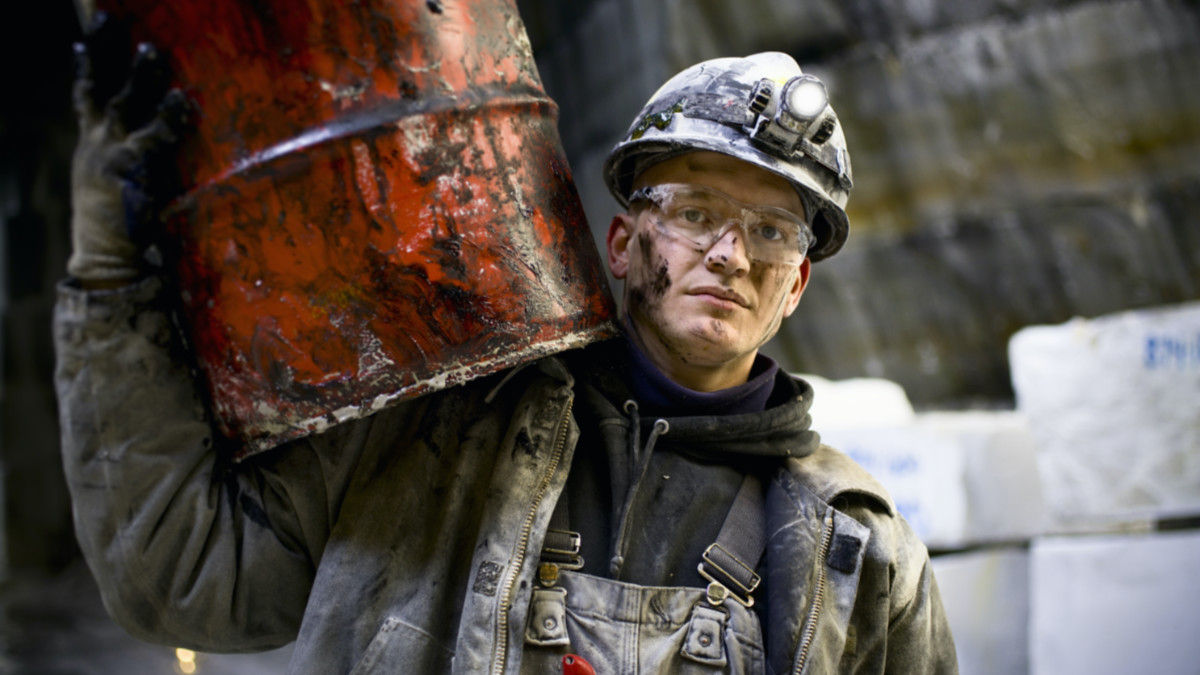A complete punter’s guide to Aussie oil and gas stocks

Here's some oil and gas. Pic: Tyler Stableford via Getty Images
Oil and gas prices are rising, a fact that anyone who has been to the pumps in recent weeks will know from their empty wallets. And it is only going to get worse given that changes in international crude prices can take about two weeks to work their way through to end users.
This is due to a combination of low inventories and producers failing to raise output quickly enough to match the rapid rebound in consumption since the recession caused by last year’s COVID-19 outbreak.
Commercial inventories of crude oil and products across the OECD are about 165 million barrels, or 6% below the pre-pandemic five-year average, while US stocks have dropped almost 225 million barrels from their peak in July 2020.
There is also some evidence that major producers are shying away from big increases in production as rising oil prices translate to increased revenues.
Primary Vision added in its latest report that oil prices are likely to increase further on the back of a cold winter and conversion from coal/natural gas to oil consumption.
On the gas front, depleted gas stockpiles in Europe coupled with increasing demand as the Northern hemisphere enters winter have meant that suppliers are struggling to meet demand.
This has resulted in soaring gas prices that have liquefied natural gas producers with the ability to fill spot cargoes cackling in glee, a point that is highlighted by Primary Vision noting that North American LNG facilities were trying as hard as possible to fill contractual volumes and increase spot cargoes to capture the huge spike in prices.
Pilot Energy executive chairman Brad Lingo told Stockhead that there were three fundamental reasons for the strong gas prices that stem from a mix of short-term market factors combined with larger macro-economic trends.
“Firstly, there are the short-term market factors created by the global COVID-19 pandemic that delivered not only demand destruction with the turn down in overall economic activity but a more significant curtailment of supply as overall exploration and development activity reacted even more strongly to this short-term demand destruction,” he explained.
“Secondly, with the anticipated and actual post-pandemic live-with-COVID recovery in economic activity, there has been a much quicker recovery in demand for gas than the exploration, development and production supply chain is able to respond to.
“Major gas supply projects take a significant amount of time to plan and deliver and once that project delivery cycle is interrupted it takes a fair amount of time just to get back to where you were with the project when it was put in holding pattern.
“And since in relative terms gas is not really ‘storable’ in any significant volumes and generally only on a very localised basis the gas supply chain has limited capacity to quickly respond to sudden demand recovery – hence the ‘V-shaped’ recovery we are beginning to see.
“Thirdly, and this is a much more systemic influence on gas supply relative to overall energy demand, is the relatively sudden curtailment of capital interested in following hydrocarbon investment relative to the strong growth in capital available to clean, renewable and green energy projects.
“It is this constraint on capital that is likely to limit strong growth in gas supply relative to growth in overall energy demand thus resulting in continuing favourable price factors in terms of the supply/demand market balance.”
Lingo added that these all point to continuing strong gas prices but also a significant increase in gas price volatility.
East Coast gas crisis looming?
And while the same isn’t true for Australian gas prices at the moment due to our isolation and abundant gas resources, this might change before too long.
Metgasco chief executive officer Ken Aitken told Stockhead there are two stories in Australia.
“Here in the West, the price has been pretty subdued for a number of years because of the domestic gas reservation policy, which sees the government asking for 15% of each new field to be held for domestic use,” he noted.
This is in contrast to the eastern states where prices had climbed as a lot of coal seam gas was sold as LNG.
“During COVID-19, a lot of that gas that wasn’t needed by Asia because of the lockdowns and shutdowns was being put into the domestic market and the gas price fell back a little,” Aitken said.
“Now that more gas is going to LNG to meet the contracts there, because these countries are coming out of the pandemic, the gas price in East Coast is rising, whereas in the West Coast there’s a lot of onshore gas being found and the gas price hasn’t really moved.”
He added that a domestic gas crisis is looming in the East as there hasn’t been a lot of exploration recently.
ASX stocks to watch
Here are a selection of oil and gas companies with established oil and gas reserves or with existing production or plans to become producers in the near-term.
Market Cap: $30.6m
While ADX Energy is looking increasingly at renewable energy, the company has also been growing its Austrian oil and gas production.
In the June quarter, it produced oil and gas at a rate of 348 barrels of oil equivalent (boe) per day, up from 261boe/d in the March quarter.
The company has 0.9 million barrels of proved and probable reserves along with a significant number of leads and prospects to further grow reserves and production.
Market Cap: $11.5m
Bass Oil recorded production of 5,400 barrels of oil in September from its share of the Tangai-Sukananti licence in Indonesia’s South Sumatra Basin.
It recently raised $2.5m and is preparing to drill the Tangai-5 development well in early 2022.
The company has also acquired some non-operated Cooper Basin assets from Cooper Energy including a 30% interest in the producing Worrior oil field.
Market Cap: $93.2m
Blue Energy recently raised $10m through a placement of shares to fund a reserve building program at its ATP 814 permit in the North Bowen Basin, Queensland.
This is aimed at increasing the company’s proved and probable reserves, which currently stand at 71 petajoules, to underpin gas supply agreements with EnergyAustralia, Origin Energy and Queensland Pacific Metals.
Notably, the Origin and EnergyAustralia gas agreements are expected to underpin new gas pipeline construction.
Market Cap: $156m
Byron Energy expects to bring its South Marsh Island 69 E2 well offshore Louisiana into production later this month or early in November.
This comes after it successfully run and cemented production casing at the well in September.
Market Cap: $125.9m
Calima Energy reported production of 3,493 barrels of oil equivalent per day in August, up 202boe/d from July, from its Brooks and Thorsby projects in Alberta, Canada.
It recently kicked off a fracture stimulation program for the Leo 1, 2 and 3 wells at the Thorsby project with flow testing expected to start during the last week of October.
Each well has a horizontal section of about 3,720m and will have about 50 fracture stages. This is expected to deliver IP90 (average daily production after 90 days) of between 270boe/d to 460boe/d each with oil making up 80% of the output.
Market Cap: $116.1m
Comet Ridge recently executed a binding agreement to acquire APLNG’s 30% interest in the Mahalo gas project in Queensland, taking its stake up to 70%, though this might be reduced to 50% under the equity alignment agreement with Santos.
The company has just spudded the Mahalo North-1 vertical well that is aimed at certifying reserves at the Mahalo North block, which will in turn support a large Mahalo Hub development.
Market Cap: $452.6m
Cooper Energy is a veteran oil and gas company with production of 2.63 million barrels of oil equivalent during the 2021 financial year.
However, the company is certainly not resting on its laurels with completion of its Athena gas plant project at 90% completion at the end of the September.
The plant will replace the Iona plant, offering higher production, lower operating cost and the ability to support the Otway Phase 3 development.
Market Cap: $72.2m
While Melbana doesn’t actually have a reserve yet, the real magic is with its Alameda-1 well onshore Cuba, which has intersected at least 48m of net oil and gas pay with a conservative porosity cut-off of 12% according to preliminary evaluation.
This is a significant result by any standard but where it is potentially exciting is that this result was derived from electric logging over 1,389 metres in the upper part of the secondary objective drilled to date.
Drilling is still underway and has yet to intersect the deeper primary targets.
Market Cap: $20.5m
Metgasco participated in the recent successful drilling of the Vali and Odin gas wells in the Cooper Basin, which achieved a 100% success rate.
A final investment decision to commercialise the Vali field is expected in the current quarter with production at a gross rate of about 12 million standard cubic feet of gas targeted to begin in the middle of 2022.
This is perfectly timed and placed to meet gas demand in Australia’s East Coast and could be increased by tying-in the nearby Odin gas field.
The company is also participating in the upcoming Cervantes-1 oil exploration well in the Perth Basin.
Market Cap: $28.4m
Oilex is looking to restart gas production at the C-73 and C-77H wells in the Cambay production sharing contract in Gujarat, India.
It is also planning to workover and re-complete C-77H to boost production in early 2022 while development of well programs for two planned horizontal wells, C-78 and C-79, is at an advanced stage.
The Cambay PSC has a contingent gas resource of 926 billion cubic feet of gas.
Market Cap: $38.1m
While Pilot Energy has been blazing a trail on the renewables front, the company also has a stake in the operating Cliff Head oil field in the Perth Basin where operator Triangle Energy has flagged the potential to boost production.
This will be achieved through a three-well program that is aimed at increasing production up to 3,000 barrels per day while extending field life beyond 2030.
Market Cap: $44.9m
Red Sky recently confirmed that the wellbore at its Killanoola SE-1 well in South Australia’s Penola Trough is clear, paving the way for the installation of a wellhead, wireline perforation works and well testing.
Should the wireline perforation of the 16m of potential pay at SE-1 work, it is expected to increase oil production rates significantly.
Prior to the discovery of potential pay at SE-1, the Killanoola-1 well had flowed oil at a rate of up to 300 barrels per day.
Market Cap: $19.2m
Sacgasco has existing oil and gas reserves and production at its Red Earth and Alberta Plains projects in Alberta with plans to boost both.
It also has cash flow from gas wells in the Sacremento Basin, California, along with a 72.5% working interest in Service Contract 54A in the North West Palawan Basin offshore Philippines.
Market Cap: $354.1m
Strike has just delivered a 300 petajoule resource for the West Erregulla gas field in the Perth Basin that was the subject of a successful appraisal drilling program.
Notably, this resource is hosted within the primary target Kingia Sandstone and the company believes that up to 128 petajoules could be present in other formations such as the High Cliff and Wagina/Dongara sandstones.
Construction of the upstream and midstream processing facilities is expected to commence in the second half of 2022 once final investment decisions are made and regulatory approvals are received.
Strike is also poised to drill the Walyering-5 well with Talon.
Market Cap: $65m
As noted above, Talon is participating in the promising Walyering-5 gas well that targets up to 38.7 billion cubic feet of gas and 0.98 million barrels of condensate.
The oil and gas company has also acquired the Condor prospect that could have the potential to host up to 10 times the gas resources at Walyering and the right of refusal over the Ocean Hill gas discoveries.
Market Cap: $63.6m
Vintage is the operator of the Vali and Odin gas fields as well as the Cervantes-1 exploration well that Metgasco has interests in.
The latter targets a gross prospective resource of about 15.3 million barrels of oil.
Market Cap: $171.2m
Warrego shares the West Erregulla gas field with Strike but that is not its only project.
The company also holds STP-EPA-0127, the largest onshore Perth Basin exploration permit application that straddles a relatively unexplored major rift basin with recognised structural and stratigraphical characteristics of the Northern Perth Basin and the Southern Carnarvon Basin.
A six-year conventional work program and budget has been submitted to the WA Department of Mines, Industry Regulation and Safety for review while Native Title negotiations are at an advanced stage.
Multiple West Erregulla-sized prospects and leads with potential for gas and liquid hydrocarbons have been identified and a GIS project database is nearing completion.
Market Cap: $17.1m
Following the success of its White Hat 2106 well in Texas that produced oil and gas at an average rate of 375boe/d during the first 12 days of October, Winchester Energy is now carrying out a recompletion targeting the same prospective formation at the White Hat 3902 well.
It is also waiting on the results of earlier work on the White Hat 1703 and 1705 wells, which are also expected to deliver increases to its oil and gas production.
At Stockhead we tell it like it is. While ADX Energy and Metgasco are Stockhead advertisers, they did not sponsor this article.
Related Topics

UNLOCK INSIGHTS
Discover the untold stories of emerging ASX stocks.
Daily news and expert analysis, it's free to subscribe.
By proceeding, you confirm you understand that we handle personal information in accordance with our Privacy Policy.








